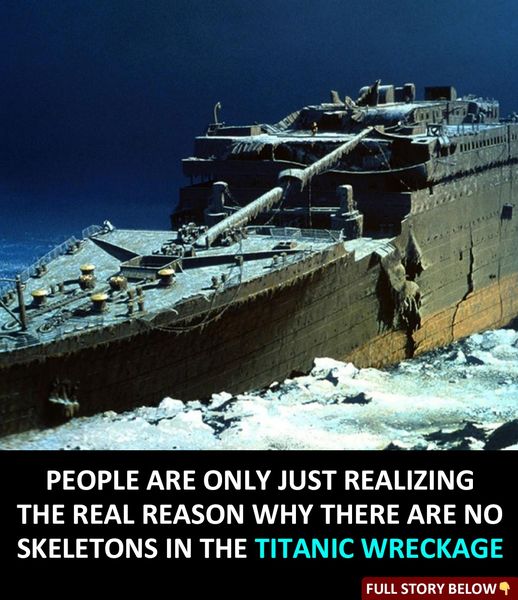People Shocked After Realizing Why There are No Skeletons on the Titanic

Why Are There No Human Remains at the Titanic Wreck? The Ongoing Mystery
The sinking of the Titanic is one of history’s most haunting tragedies, yet one mystery surrounding the wreck continues to intrigue experts: the absence of human remains. Unlike other shipwrecks where skeletal remains have been discovered, the Titanic’s final resting place shows little to no trace of the over 1,500 lives lost in the disaster.

Why Haven’t Human Remains Been Found?
The Titanic lies approximately 3,800 meters (12,500 feet) below the ocean’s surface, a depth that plays a crucial role in the disappearance of bones. According to deep-sea explorer Robert Ballard, the water at this level is undersaturated in calcium carbonate, a key component of bones. Over time, the seawater dissolves bones, redistributing calcium into the surrounding environment.
Interestingly, while bones have vanished, some personal artifacts remain, such as shoes, luggage, and clothing, marking the spots where victims once lay. This eerie preservation raises questions: If certain items have endured the deep-sea conditions, why has no trace of human remains been left behind?
Ethical and Legal Debates Over the Titanic Wreck
Beyond the mystery of missing remains, the Titanic’s wreck site has sparked legal and ethical debates over artifact recovery. Some argue that the Titanic is a memorial site, akin to a mass grave, and should remain undisturbed out of respect for the deceased. Others believe retrieving artifacts, such as the ship’s radio equipment, could provide historical insight and honor the legacy of those who perished.
Court battles have erupted over whether the Titanic should be explored further or left untouched. Some families seek closure, hoping that new expeditions might reveal previously unseen remains, while preservationists stress that disturbing the site risks damaging its historical significance.
Could Human Remains Still Be Inside the Titanic?
Despite theories about bone dissolution, some researchers speculate that skeletal remains may still exist within the Titanic’s interior, protected from the corrosive deep-sea environment. The ship’s steel hull and silt-covered sections could have shielded remains from erosion, though no official discovery has confirmed this possibility.
Additionally, it’s believed that many victims in life jackets drifted away from the wreck, making it difficult to determine whether their remains sank elsewhere or were consumed by deep-sea organisms over time.
Titanic’s Enduring Mysteries
More than a century after the disaster, the Titanic continues to raise unanswered questions. While the science of deep-sea decomposition explains much of the mystery, it doesn’t fully account for the complete disappearance of human remains.
The balance between scientific discovery and respecting the tragedy remains a key concern. Should future explorations attempt to uncover more, or should the Titanic rest undisturbed as a solemn memorial to those lost?
Regardless of the unanswered questions, the legacy of the Titanic lives on, serving as a powerful reminder of the human cost of the disaster.
👉 What do you think? Should the Titanic be explored further, or should it remain untouched? Share your thoughts!